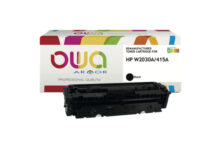 In late July and throughout the month of August, printer OEMs announced financial results for the three-month period ended June 30, 2020. When we summarized results for the quarter ended in March 30, 2020, we said that it was one of the most downbeat earnings seasons Actionable Intelligence has ever witnessed (see “The Big Picture: OEM Financials for the Quarter Ended in March 2020”). But the quarter ended in June was far, far worse for almost every single company.
In late July and throughout the month of August, printer OEMs announced financial results for the three-month period ended June 30, 2020. When we summarized results for the quarter ended in March 30, 2020, we said that it was one of the most downbeat earnings seasons Actionable Intelligence has ever witnessed (see “The Big Picture: OEM Financials for the Quarter Ended in March 2020”). But the quarter ended in June was far, far worse for almost every single company.
During the quarter that ended in March, companies were just starting to feel the impact of the coronavirus (COVID-19). With the exception of China, it was business as usual for most companies well into February, and office shutdowns and school closings didn’t start to adversely impact the industry until March. In contrast, during the quarter that ended in June, OEMs experienced three full months of negative effects from COVID-19. The end result was not pretty. With just one exception (Sharp), OEMs reported declines in their printing businesses of anywhere from 15.4 percent to 39.1 percent. With just one exception (Epson), OEMs saw profits decline in their printing segments—eight segments posted steep year-over-year declines and another seven posted operating losses.
For all the Japanese OEMs, except Canon, the period from April 1 through the end of June was the first quarter of the fiscal year ending March 31, 2021. For Canon, U.S.-based Xerox, and China-based Ninestar, this period was the second quarter of fiscal 2020. HP is on a different financial calendar than all the other OEMs. Its third quarter of fiscal 2020 ran from May 1 through July 31, 2020.
Actionable Intelligence currently covers financial results for the following printer OEMs: Brother, Canon, Epson, Fujifilm, HP, Konica Minolta, Kyocera, Ninestar, OKI, Ricoh, Sharp, Toshiba Tec, and Xerox. With this quarter, we have started including Ninestar in our comparisons. Ninestar operates the Lexmark and Pantum printer businesses. Our detailed coverage of these companies’ financial performance is available only for Actionable Intelligence subscribers, but key takeaways from our coverage are summarized below.
Overview
COVID-19 sparked an unexpected increase in demand for small-office/home-office (SOHO) printers, including both inkjets and lasers, and their supplies. While the surge in SOHO sales helped some firms, it was more than offset by plummeting demand for office printers and MFPs and their consumables, which led to significant revenue and profits declines for the industry as a whole. The rapid shift in market demand along with the coronavirus’s impact on manufacturing operations left OEMs scrambling to keep up with the uptick in SOHO hardware and consumables sales. Last quarter, certain makers of SOHO equipment and supplies experienced supply chains disruptions and product shortages in various markets, and that continued in the quarter ended in June. That limited the upside for certain OEMs.
Actionable Intelligence believes the industry hit some historic lows in the quarter ended in June. Many OEMs have indicated their results for the quarter represent the bottom of a trough and that conditions should start to gradually improve in the months ahead. That said, what will happen next remains uncertain, as so much is dependent on the course of an unpredictable virus. Many OEMs have been talking about a new “hybrid” work environment, in which some workers return to offices, but others remain at home. That will result in longer-term shifts in output volumes and the types of devices used to print. While people may print more on SOHO devices, they will be printing less on office equipment, and page volumes are expected to remain depressed. In the U.S., papermakers are bracing for the worst. Domtar, for example, is permanently reducing its uncoated freesheet paper capacity (see “As U.S. Paper Shipments Shrink, Paper Mills Report Financial Downturns and Take Action”). We suspect the situation is the same for the paper industry in other established economies like Europe and Japan where the virus continues to be an issue.
We think the changes caused by COVID-19 will ultimately shake up the industry and could lead to a new wave of consolidation. The quarter ended in June represents a major turning point. That is why we prepared a deep dive into the quarter for subscribers (see “OEMs Look into the Abyss in Industry’s Toughest Quarter Ever”). But some of our key takeaways for each vendor are below.
Performance by Vendor
When we look at the performance of OEMs’ printing businesses, there are a few helpful things to keep in mind. We are classifying all of Ninestar and Xerox as printing businesses. Xerox stopped breaking out its printing segment results separately after its split from Conduent years ago. While Ninestar does break out some of its segment results, it does so only for its first half and full-year reports, its biggest segment by far is Lexmark, and all the other segments are printing segments, so we decided to include the results for the company as a whole in our comparisons. Also, it is important to note that Sharp’s 8K Ecosystem business includes a variety of other products in addition to MFPs, including Sharp’s TV business, so the segment’s results don’t necessarily say much about the MFP and supplies business. Canon’s Imaging Systems segment includes its camera business, which experienced steep declines, and thus the segment’s performance did not reflect the strength of its inkjet business this quarter. We will now have much less insight into OKI’s printing business. Starting this quarter, OKI reorganized its former Mechatronics Systems business, Printers business, and EMS business into a new Components and Platforms Business.
In the quarter ended in June, not a single OEM reported both revenue and profit growth in their printing businesses, and just two companies—Epson and Sharp—were able to report mixed results. Epson actually reported significant profit growth in its Printing Solutions segment, and Sharp saw modest revenue growth in its 8K Ecosystem segment, although we think that was likely due to products other than MFPs. Everybody else saw revenue and profits shrink, and more companies than we have ever seen before posted operating losses in their printing businesses.
We have boiled down the performance of the various OEMs we track to a paragraph, keeping the focus on their home and office hardware and supplies businesses. For more information, click on the links below to access our detailed coverage of these companies’ financial results.
- Brother: In Q1, Brother’s revenue shrank 16.4 percent, and its profits were roughly half of what they were one year earlier. In the Printing Solutions segment, revenue fell 15.6 percent, and operating profit fell 39.3 percent. The firm saw increased demand for SOHO laser printers and MFPs, but demand for laser printers and MFPs for small to medium-sized businesses (SMBs) shrank. As office print volumes fell, Brother’s sales of laser consumables declined sharply. In its inkjet business, Brother saw increased demand for its inkjet MFPs, but the firm had production and supply issues that left it unable to fulfill demand. As a result, sales of inkjet hardware and consumables experienced steep declines.
- Canon: It was a terrible quarter for Canon with revenue contracting by one-quarter resulting in Canon’s first-ever quarterly operating loss since the firm started disclosing its earnings in 2001. In the Office segment, revenue fell over 30 percent, and the segment posted a loss for the quarter. Sales of laser printers were down sharply, and the declines in sales of MFDs were steeper still. In the Imaging System segment, revenue tumbled over 30 percent and profits fell over 90 percent. Those results, however, are due to the poor performance of Canon’s camera business, as it was a terrific quarter for Canon’s inkjet business. Inkjet revenue was up nearly 14 percent.
- Epson: In Q1, Epson reported that its revenue and operating profits plummeted compared with the year-ago period, and the firm reported a net loss. The situation in Epson’s Printing Solutions group was essentially the opposite of what we saw in Q4. In Q4, the group’s revenue decreased modestly, and profit fell over 30 percent. In contrast, in Q1, the Printing Solutions segment saw revenue decrease 15.4 percent, but profit actually grew 28.4 percent. Sales and shipments of office and home inkjet printers were down year-over-year. The firm also saw a dip in shipments of high-capacity ink tank models, as growing demand for these units in North America, Europe, and China was offset by declining demand in India, Southeast Asia, and South America. Sales were also hurt by insufficient product supply. What enabled the segment to deliver profit growth was strong sales of ink cartridges for cartridge-based home and SOHO inkjets, as well as rigorous cost-cutting.
- Fujifilm: In Q1, Fujifilm revenue and operating income shrank, but the firm posted strong net profit growth on gains on equity securities. The Document Solutions segment had a tough quarter with revenue falling 18.7 percent and operating income declining 40.8 percent. The firm said it saw demand for office products and printers shrink and decreased print volumes in both Japan and overseas.
- HP: HP’s revenue declined just 2.1 percent in Q3—this was the smallest decline reported by the companies we follow (expect, as noted below, Sharp’s total revenue grew 0.4 percent). HP’s revenue benefited from strong sales of PCs to meet work-from-home requirements. The firm’s profits fared worse, falling by double-digits. It was a terrible quarter—one of the worst we’ve seen historically—for the Printing segment. Revenue in this segment fell 19.9 percent to below $4 billion for the first time we are aware of, while operating profits shrank by 37.3 percent. Supplies revenue tumbled 18.7 percent, and commercial hardware declined a whopping 36.9 percent. The bright spot in the Printing segment was consumer hardware, which saw 6.8 percent revenue growth. The consumer segment benefited from an uptick in demand for SOHO printers, and HP also reported strong growth for Instant Ink.
- Konica Minolta: In Q1, Konica Minolta reported a sharp downturn in revenue and both operating and net losses. The Office business had a very tough quarter. Revenue was down 30.2 percent, and the Office segment posted a big operating loss. The only OEM printing business that had a bigger operating loss than Konica Minolta’s Office segment was Ricoh’s Office Printing group. Sales volumes for A3 MFPs were down 26 percent and non-hardware revenue was down over 30 percent. The Professional Print segment fared no better. Its revenue was down 37.2 percent, and it, too, reported a big operating loss.
- Kyocera: While Kyocera reported steep declines in company revenue and profits in Q1, declines were steeper still in its Document Solutions segment. Revenue in this business was down 31.1 percent, and business profit tumbled 79.8 percent. The firm worked to cut costs in its Document Solutions business by furloughing employees and cutting pay.
- Ninestar: In Q2, Ninestar’s revenue decreased 17.7 percent and its operating profit fell by 26.1 percent compared with the year-ago period. Much of the decline was due to a 13.4 percent revenue decline for Lexmark in the first half of the year, because other Ninestar segments including its third-party consumables businesses performed strongly. The firm said it is seeing a shift in demand toward lower-end inkjet and laser devices. While that hurt Lexmark during the pandemic, the firm said Lexmark’s strength in the pharmaceutical and large-scale retail sectors allowed the business to perform better than the laser printer industry as a whole. Moreover, Ninestar was able to improve Lexmark’s profits. Meanwhile, Ninestar’s third-party cartridges business grew on strong demand for supplies for inkjets and low-end laser devices. The firm said it is seeing booming sales for these products online during the pandemic.
- OKI: In its Q1, OKI’s revenue declined, but the firm’s profit performance was worse, with the company posting both operating and net losses for the quarter. As noted above, OKI no longer breaks out printer segment results. In its new Components and Platform segment, which includes a variety of products aside from printers, MFPs, and their consumables, revenue was down 22.6 percent, and the group posted an operating loss. While the firm did not say much about printers, OKI did note that it saw lower sales of printer consumables in Europe.
- Ricoh: Ricoh reported a steep downturn in revenue and operating and net losses in Q1, as sales declined in every region and every business segment. In Office Printing, revenue fell 32.1 percent, and the group reported an operating loss—a bigger one than any other printing business segment this quarter. Sales of MFP hardware and non-hardware experienced steep declines, as did sales of laser printers and laser printer non-hardware.
- Sharp: Sharp is one of the few vendors we covered to post revenue growth for the quarter ended in June. Revenue was up a very modest 0.4 percent; however, operating and net profits experienced sharp declines. The 8K Ecosystem group posted 1.7 percent revenue growth, but it reported an operating loss for Q1. As noted above, the 8K Ecosystem group also includes Sharp’s TV business. While last quarter Sharp reported declines in copy volumes and service sales as a result of the pandemic, in its latest financial report it said nothing about its MFP and supplies business.
- Toshiba Tec: In Q1, Toshiba Tec posted a sharp revenue decline and operating and net losses. The firm’s Printing Solutions segment saw revenue decline a whopping 39.1 percent—that is a biggest year-over-year revenue decline of all the printing segment businesses we follow. The Printing Solutions segment also posted an operating loss for Q1. Toshiba said it saw sales of MFPs decline in the Americas, Europe, and Asia.
- Xerox: In Q2, Xerox posted a hefty revenue decline of 35.3 percent as equipment sales tumbled 38.5 percent and post-sale revenue declined 34.3 percent. However, the company had better news about profits than it did last quarter when operating profit fell 63.6 percent and it posted a net loss. In Q2, operating profit fell 35.3 percent, and the company posted a net profit. That said, profits were helped by $53 million in government assistance and $7 million from furlough programs because the firm certainly wasn’t selling more equipment in any category. In the entry level, the midrange, and the high-end categories, revenue fell sharply. Units were down for everything except high-end black-and-white equipment due to strong sales of the Nuvera.
Finally, Some Forecasts!
Last quarter, only Kyocera and Toshiba Tec issued forecasts for FY 2020. All the other companies we follow either declined to provide a new outlook for the year ahead or pulled previously issued guidance, citing uncertainties surrounding COVID-19. That changed with the quarter issued in June.
Every one of the printer OEMs we follow issued guidance for FY 2020, aside from Konica Minolta and Xerox. Not surprisingly, these were two of the harder-hit companies.
With the exception of Sharp, for whom MFPs represent a relatively small portion of its business, no printer OEM issued guidance indicating they expected to post revenue or profit growth for the company as a whole in 2020. Most are projecting significant full-year revenue declines and some truly astounding declines in profits for the full year.
If you want the most up-to-date information on printer OEMs’ financial performance, legal issues, new product introductions, and other topics impacting the printer and MFP hardware and supplies industry, subscribe to Actionable Intelligence.







